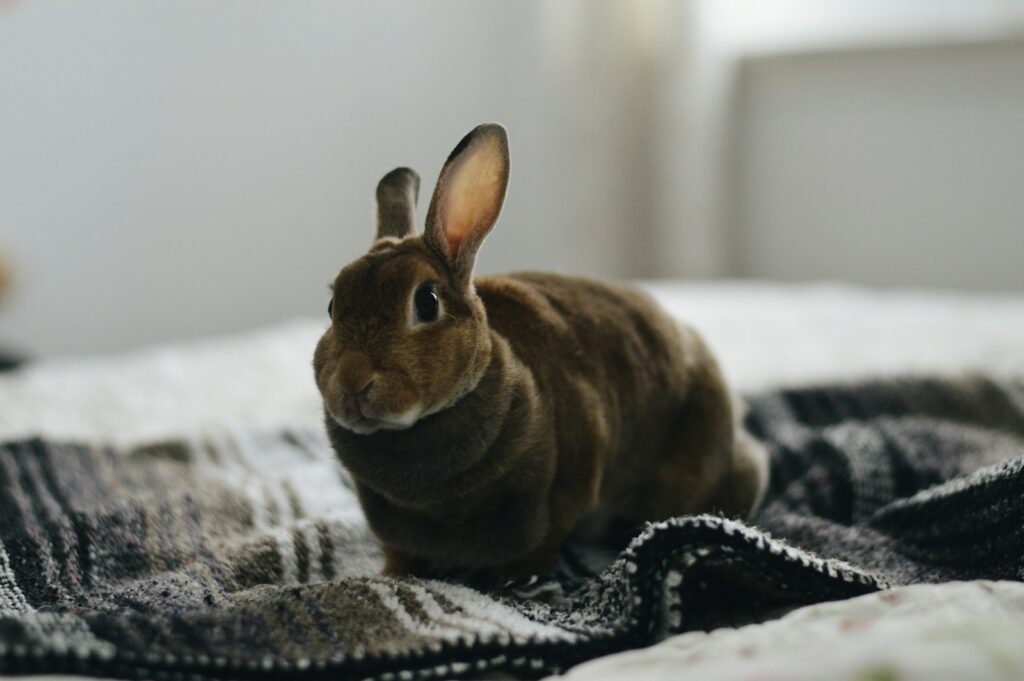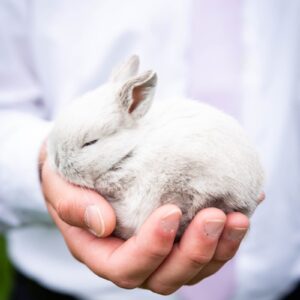If you already have a rabbit or are thinking about getting one, it’s important to know the differences between male and female bunnies so you can take better care of them. Rabbits are interesting animals that have their own unique traits and habits. Knowing how their gender affects them can help you care for them better. Let’s get into the details of how male and female rabbits are different so that you can make an informed decision.
Male and Female Rabbit Differences
Male and female rabbits, known as bucks and does, respectively, exhibit distinct differences that go beyond their physical appearances. The primary difference between male and female rabbits lies in their reproductive anatomy and behaviors.

Physical Characteristics
Bucks, the male rabbits, tend to be bigger and have wider heads and shoulders than does, the female rabbits, which tend to be smaller and more streamlined. Bucks also have a sac that can be seen, especially when they are about 3 to 5 months old and ready to mate. Rabbit females, on the other hand, have a vulva and may get a dewlap, which is a loose fold of skin under their chin that is more noticeable in some breeds and older females.
By knowing these physical traits, you can properly tell what gender your rabbit is, which is important for many parts of their care, such as possible health issues and how they interact with other rabbits.
Behavior and Temperament
Even though every rabbit is different, there are some general differences in how male and female rabbits act. Male rabbits, especially ones that haven’t been fixed, can be more protective and may act aggressively, especially toward other rabbits, by marking their territory with pee. Getting male rabbits neutered can help stop these actions and make the surroundings more peaceful.
On the other hand, female rabbits tend to be friendlier and may be more caring, especially with their young or other rabbits. Spaying female rabbits stops them from getting pregnant when they don’t want to, and it can also lower their risk of getting some reproductive health problems, like uterine cancer.
If you know about these rabbit behavior patterns, you can better connect with them and make sure they are healthy and happy by giving them the right training and activities.
Reproductive Considerations
Male rabbits are sexually mature around 3 to 5 months, and female rabbits are sexually mature around 4 to 6 months. Rabbits can become overpopulated and their babies can get sick if they breed without being watched. Because of this, it’s important to think about reproduction when taking care of rabbits.
Spaying and neutering female rabbits and preventing unwanted litters of bunnies is good for their health in other ways as well. When you neuter a male rabbit, you lower his risk of getting some cancers. When you spay a female rabbit, you lower her risk of getting uterine cancer and other reproductive problems.
Talking to a skilled doctor about these treatments can help you make smart choices about your rabbit’s reproductive health and general well-being.
Health and Care
All rabbits, male or female, need the right care to do well. This means giving them a healthy meal with lots of hay, fresh veggies, and just a few treats. Care for rabbits also includes giving them a safe and interesting place to live, taking them to the vet regularly, and making sure they are handled and socialized properly.
Keeping an eye on your rabbit’s health, habits, and surroundings can help you spot any problems early and take care of them right away. Keeping their living area clean and giving them fresh water every day are examples of good cleanliness that can help their health and well-being as a whole.
Conclusion
Learning the differences between male and female rabbits is important for taking the best care of these cute pets and making sure they have a happy home. Every part of our rabbit friends’ lives, from their looks to their behavior to their ability to reproduce, affects how we care for and interact with them.
You can make sure your rabbits live long, happy lives and bring joy to your home for years to come by learning about rabbit care and taking action. Remember that every rabbit is different, so paying attention to and understanding your rabbit’s wants and habits is important for making a strong bond and a caring relationship.
We hope this guide has given you useful information about how male and female rabbits are different and how to care for them. Stay tuned for more helpful information and advice on how to take care of and keep your rabbit healthy.
Keywords: male and female rabbits differences, rabbit care, rabbit behavior, rabbit health, spaying and neutering rabbits
This post was all about male and female rabbit differences.




